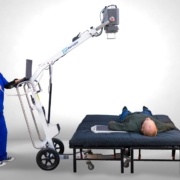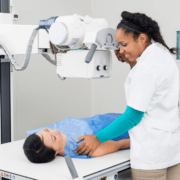When considering security, is there anyone who overlooks their safety? In every industry, whether it’s healthcare, veterinary medicine, industrial inspection, or any other field, there exists a shared responsibility to uphold strict compliance and safety standards. These standards are crucial to safeguarding the well-being of both patients and practitioners. Different countries maintain their own regulatory bodies tasked with overseeing the safety and performance of medical devices, including portable X-ray machines. For instance, in the United States, the Food and Drug Administration (FDA) is responsible for regulating medical devices, while in the European Union, the European Medicines Agency (EMA) and the European Commission oversee regulatory matters. In this blog, we explore the essential facets of compliance and safety standards specific to portable X-ray devices. We underscore their significance and offer practical insights for achieving adherence.
Why Compliance Matters
At the heart of compliance standards lie the principles of patient safety, accurate diagnostics, and radiation protection. These standards are not merely bureaucratic red tape; they are meticulously crafted guidelines aimed at safeguarding lives and optimizing healthcare outcomes. Adhering to safety standards ensures patient protection by minimizing radiation exposure during diagnostic procedures, thereby safeguarding their health and well-being. Moreover, compliance guarantees the accuracy of diagnostic imaging, which is pivotal for effective treatment planning and patient care. Additionally, adherence to safety protocols safeguards healthcare workers from potential radiation hazards, preserving their occupational health and safety. From a legal and regulatory perspective, compliance is indispensable to meet industry standards and avoid penalties or legal ramifications for non-compliance. Ethically, it underscores a commitment to delivering quality care and prioritizing patient safety, reflecting the core values of healthcare. Therefore, ensuring compliance with safety and regulatory standards is paramount for the ethical and responsible operation of portable X-ray machines in medical facilities, serving the best interests of both patients and healthcare professionals alike.
Understanding Compliance Standards
Compliance standards for portable X-ray devices are primarily designed to safeguard patient health, ensure precise diagnostics, and minimize radiation exposure risks. These standards are established to certify the safe and effective operation of such devices, encompassing various critical aspects, including electrical safety, radiation safety, mechanical integrity, and quality management systems.
Key components of compliance standards include:
Equipment Calibration: Regular calibration of portable X-ray devices is paramount to maintain accuracy in imaging and radiation dosage delivery.
Operator Training: Adequate training of personnel handling portable X-ray devices is imperative to mitigate the risk of errors and ensure compliance with safety protocols. Technicians should undergo comprehensive training programs covering device operation, radiation safety, and regulatory compliance.
Radiation Safety Measures: Implementing robust radiation safety measures is crucial to prevent unnecessary exposure to radiation for both animals and personnel. This includes the use of protective gear such as lead aprons, thyroid shields, and gloves, as well as adherence to safe operating procedures and exposure time limits.
Quality Assurance: Regular quality assurance checks, including image quality assessment and equipment maintenance, are essential to uphold diagnostic accuracy and compliance with regulatory standards.
In conclusion, adhering to stringent regulatory and safety standards is essential to employ portable X-ray devices in diagnostic procedures. Prioritizing elements such as equipment calibration, operator training, radiation safety measures, and adherence to safety protocols ensures the safe and effective utilization of X-ray technology while delivering top-notch care to patients. Through ongoing vigilance, education, and adherence to best practices, the health industry can uphold the highest standards of compliance and safety in the use of portable X-ray devices, thereby ensuring the well-being of both patients and medical staff.




